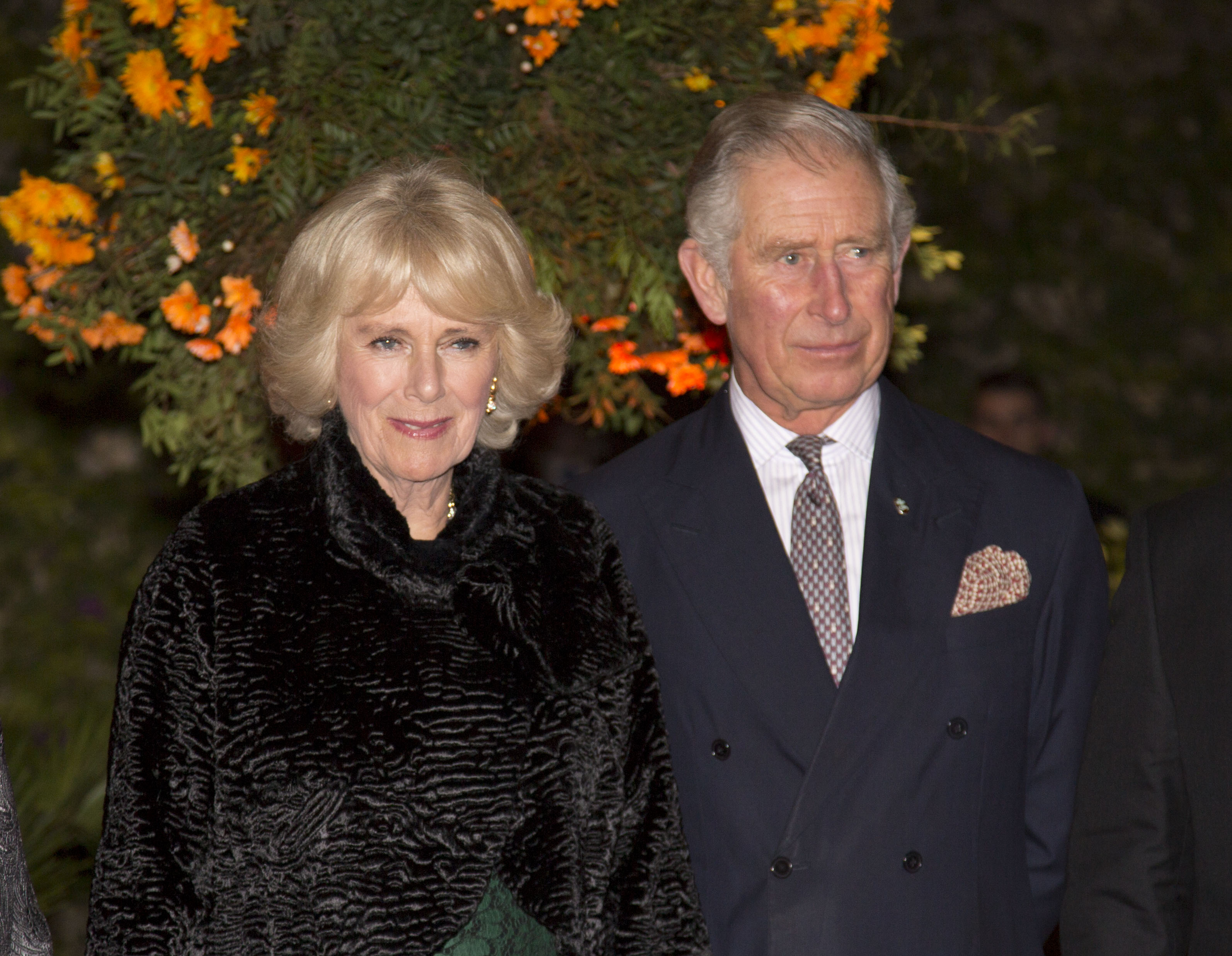The Prince of Wales and Duchess of Cornwall are currently halfway through a tour of Eastern Europe, having already visited Croatia and Serbia.
Charles and Camilla arrived in Zagreb on Monday, and were greeted with a ceremonial welcome at the Presidential Palace; here they met the president, Kolinda Grabar-Kitarovic. The couple enjoyed a tour of the Palace, then headed into town for a ride on the 125 year-old Funicular Railway, to get a stunning view of the town.
A trip to the Croatian National Theatre was arranged for the evening, where the Prince and Duchess were treated to some performances. Following the show, they awarded prizes to children who took part in the British Council’s ‘Shakespeare in Schools’ competition in the country.
A short ride on the 125 year-old Funicular Railway takes TRH to view Zagreb from the Upper Town. #RoyalVisitCroatia pic.twitter.com/1AW1uwJYA5
— Clarence House (@ClarenceHouse) March 14, 2016
Prince Charles is a frequent visitor to Eastern Europe, having first travelled to the Balkans in 1978, before the four countries became independent following the break-up of Yugoslavia.
Camilla’s focus for the six-day tour is campaigning against sexual violence, something she has been tackling for a number of years.
A dinner was held at the Presidential Palace that evening, where the Prince gave an address.
On the second day in Croatia, Charles and Camilla attended an event celebrating local traditions in Osijek Tvrda, the Intangible Cultural Festival. Here they got to try some local drinks and foods, as well as seeing the traditional dance from a local folklore troupe.
The Prince of Wales later attended an interfaith dialogue meeting at Osijek’s archaeological museum, to help communities come together, regardless of faith, as the Duchess went to a meeting to discuss sexual violence’s use as a weapon of war.
The Royal couple then joined a ‘Peace is in our hands’ seminar with students and teachers, discussing their experiences of peace building work.
Husband and wife then rejoined to visit Co-Cathedral. Here, they heard how the cathedral was restored after being damaged in the Croatian War of Independence of the 1990s. A project from the UK – the International Trust for Croatian Monuments – helped restore the Cathedral’s 33 windows following the damage.
Camilla, a lover of horses, visited the Đakovo State Stud Farm, while her husband was at the Kopački Rit Wetlands and the Zlatna Greda Eco-Centre.
Charles learnt about the different uses of the Wetlands, and how the centre monitors biodiversity and environment protection. Here, he signed the visitor’s book: “I am impressed by all the work being done to restore such a major and vital ecosystem in Europe”.
The Duchess saw the Lippizzaner mares and foals stables, hearing about the breeding and selection techniques used at the farm. The Duchess also viewed a parade of the horses. The Queen, The Duke of Edinburgh and The Princess Royal, have previously visited the Stud Farm at Đakovo in 1972.
The final order of the day for the Prince was to celebrate The British Council and their 70th Anniversary at the Arts and Crafts Museum in Zagreb.
It was then to Serbia for the Royal couple. The Prime Minister Aleksandar Vucic welcomed the Prince and Duchess.
Charles and Camilla began the first day in Serbia with memorial events.
The Prince of Wales laid a wreath at the Memorial Crypt of the Belgrade Defenders, paying respect to those who lost their lives in Belgrade in WWI. To mark the occasion, The Prince wore an RAF tie, Veterans badge and the shoes issued to him when he joined the RAF in March 1971.
It was then to the Commonwealth War Graves Cemetery for a wreath laying ceremony. Charles and Camilla were led into the site by a piper from the Royal Irish Regiment and both the Serbian and British national anthems were played by the military band before Prince Charles and President Nikolic laid a wreath.
A walking tour of Kalemegdan Fortress followed, which was guided by historian Professor Stojanovic. The Belgrade Fortress was declared a Monument of Culture of Exceptional Importance in 1979.
Charles then joined an inter-faith dialogue with representatives from Serbia’s Christian, Muslim and Jewish communities, before visiting the Serbian Orthodox Patriarchate for a meeting with Patriarch Irinej Gavrilovic of Serbia.
The Prince also paid a visit to St Sava Temple, where he was given a tour and listened to a piece of music composed solely for the visit. St Sava Temple is the biggest Orthodox temple in the Balkans.
The Prince of Wales continued the afternoon with a visit to the Nova Iskra Entrepreneurship Hub, a centre that helps foster cooperation between small businesses in Belgrade. The Prince viewed a showcase of craftwork products which are a result of Nova Iskra’s entrepreneurships hub programme.
The last engagement for His Royal Highness was a meeting with HRH The Crown Prince Alexander Karadjordjević of Serbia and Her Royal Highness Princess Katherine of Serbia at the Royal Palace. The Prince toured the Royal Palace before having a short meeting with The Crown Prince.
The Duchess of Cornwall meanwhile visited Zvecanska Children’s Home, meeting representatives of UNICEF and the Novak Djokovic Foundation, and families who have benefited from the centre.
On the way in to the centre, Camilla helped push a young boy on the swing, showing her grandmotherly side.
Founder of the Foundation, Novak Djokovic, had recorded a thank you message for the Duchess.
It was another engagement in support of sexual violence victims for the Duchess. She went to Atina, a centre for women who have suffered from sexual and domestic violence. The Duchess wrote a message of support for the young women she met, saying:
“With great admiration and my very best wishes to you all for the future.”
The pair also travelled to Kosovo and Montenegro this week, which we will inform you of shortly.








*countries